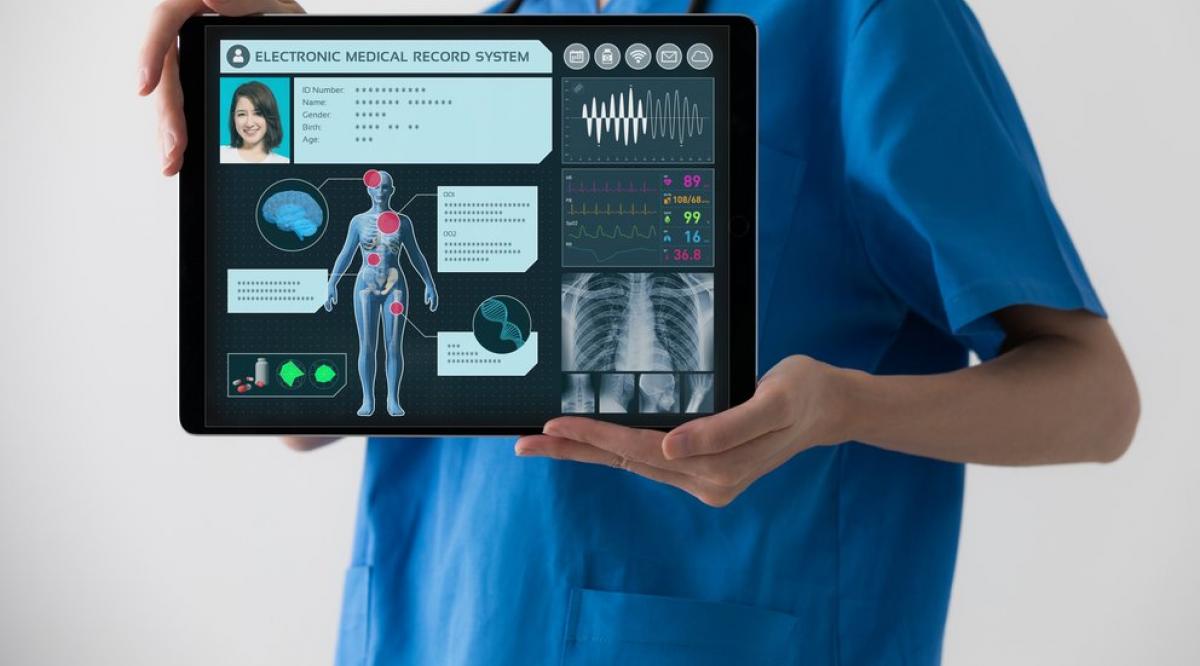Transforming EHR Usability with Intelligent AI-Powered Features
Electronic Health Record (EHR) systems have increasingly been adopted in the modern health facility as tools for patient data management and healthcare delivery. However, EHR system usability continues to challenge healthcare professionals. That, however, changed with the invasion of artificial intelligence (AI) in EHR systems, making such a system more intelligent, swift, and kin to the users. AI exacts the hidden benefits of those electronic health record systems helping healthcare providers to portray a positive change in patient care with better performance.
The Current State of EHR Usability
EHR systems, however, despite having brought remarkable change in the face of HHS, draw criticism due to their complicity and non-intuitive usability. Current practice reveals that physicians and other medical staff face difficulties sometimes involving complex interfaces, duplication of data input, and generalized time-consuming. All of these issues not only lead to user dissatisfaction but also to decrease the time given to patients.
However, EHR Software adoption in India is gradually increasing, and thus, easy-to-use solutions are critically important in this area. EHR software in India needs to fit various contexts – from large tertiary care hospitals to rural clinics and must solve specific issues such as multiple language data entry, the requirement of relevance to local legislation, etc.
AI: The Game-Changer in EHR Usability
Speaking of electronic health record system software, one can confidently state that the reign of AI is imminent here as well. Intelligent automation coupled with an advanced and open structured design, predictive analytics, and natural language processing minimizes multiple issues typically related to conventional EHR systems.
- Streamlined Data Entry
One of the biggest drawbacks of EHR usage is data entry or more precisely manual written input. Such brilliant devices as S2T and NLP make it possible for, let’s say, physicians to dictate their notes, and these notes are then inserted as structured data into the system. This cuts the time required to document processes and also the likelihood of errors.
For example, some can predict data and complete patient records or recommend where data is expected to be entered, thus avoiding instances of omission of important data about a specific patient. Such enhancements are especially useful in the massive amount of patient traffic characteristic of facilities in India where doctors may have to attend to several patients at once.
- Personalized Interfaces
In standard EHR designs, an interface is provided to many users simultaneously which often doesn’t fit anyone well. AI can also make it operation-specific and tailored to the user, their characteristics, and daily work responsibilities. For instance, in the pediatrician’s dashboard, one can have vaccinations, growth patterns, etc, while a cardiologist may need an ECG test, heart rate, etc.
- Predictive Analytics for Better Decision-Making
Auto-mode of Electronic Health Records software should be able to peruse the trends and suggest measurements that can be taken to prevent poor outcomes. For example, the system may notify a doctor if the parameters of a diabetic patient are too dangerous for complications.

This capacity feature brings efficiency to clinical management, resulting in early intervention and by far better patient care. In rural health facilities where specialists are scarce, such features enable general physicians to offer more informed care.
- Intelligent Scheduling and Resource Allocation
AI can help determine the likely duration of each appointment to minimize time-lapse for the patients. For healthcare facilities, intelligent resource use means staff, equipment, and infrastructure are utilized properly.
- Advanced Data Security and Compliance
AI improves the security of e-HRS software due to increasing cases of data breaches. There is usually the ability to identify abnormal access patterns which are great for real-time threats in the network. Besides, AI is used to promote compliance with international and national laws, crucial for EHR software in India and compliance with the applicable NDHM guidelines.
Benefits of EHR Enhanced by AI
This brings the Benefits Of EHR systems multiple folds, with the addition of AI into EHR software. Key advantages include:
Improved Efficiency: AI at its basic level minimizes bureaucracy and saves time that typically would have been used handling paperwork thus enabling human resources in the health sector to work more around the patients.
Enhanced Patient Engagement: The patient self-management tools include patient education resources, patients’ health status information, and/or schedule of upcoming appointments via the patient application which is developed using AI technology.
Better Clinical Outcomes: Technologies such as predictive analysis and decision support tools help in finding the right diagnosis and management plans.
Cost Savings: Automation and resource optimization lead to cost savings since many healthcare facilities might have limited capital to spend on these operations.
The Future of EHR Software
It is important to note, though, that this participatory process of EHR software implementation remains a work in progress that is steadily progressing towards higher levels of automation, real-time data analysis, and integration. In the future, the use of these technologies will become even more refined, and new enhancements such as the capability for real-time activity modeling for instance, and augmented reality for carrying out procedures as part of the electronic health record system software.
From India’s perspective, this evolution presents a huge chance to close the urban-rural divide in the sector and ensure that everyone has equal access to great healthcare services. Artificial intelligence-enabled EHR software in India has the huge potential to help us realize the vision of the National Digital Health Mission and provide a healthier future for the population.
Conclusion:
The concept of artificial intelligence is revolutionizing the ways people use electronic health record system software and is gradually overcoming major problems and discovering fresh opportunities for healthcare organizations. AI makes Electronic Health Records Systems useful tools and not just huge databases of patient health records by performing simple tasks, providing recommendations, and improving decision-making processes.
It is also important to note that for both healthcare givers and designers, the incorporation of AI cannot be an option, much as it cannot be avoided. Both nationally and internationally, techniques like intelligent features included in EHR software are paving the way for a more advanced, patient-oriented healthcare system.
